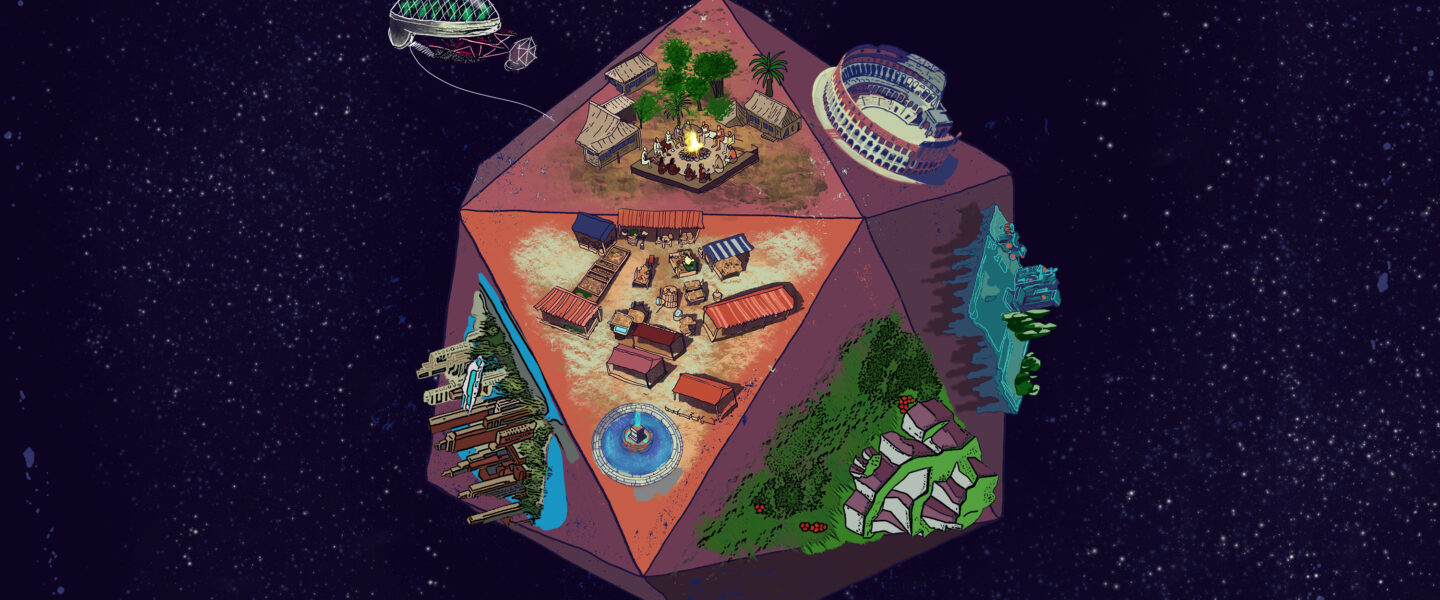
The Estonian Academy of Arts will go to the world-famous media festival and conference Ars Electronica, which will take place on 4-8. September in Linz, Austria.
The EKA representatives have been invited for the first time to the major event of technological art the Ars Electronica with project “Godseed”, which is born in cooperation between EKA Interaction Design and Animation curricula. Previously, Timo Toots, a graduate of EKA Photography, was awarded from Estonia by Ars Electronica, in 2012, with the Memopol-2 project, in the interactive art category.
With the interactive globe solved in traditional materials, EKA Animation and Interaction Design students create the opportunity for festival visitors to create their own world. In an interactive installation “Godseed” artists use an interface with a hand-tangible Earth-like interface to grow a new world. Based on the choices of visitors, the story develops through manually drawn animations. Participants are encouraged to critically evaluate and try the results of their choices. Godseed invites the dialogue to the duality of human ambitions and technology, looking to the future through the creator’s eye. By placing a guest in God’s shoes, the work makes us think about individual and collective roles in the world.
The EKA team includes eight students and mentors from the EKA Interaction Design and Animation Department – Ottavio Cambieri, Helena Väinmaa, Sander Põldsaar, Rainer Pits, Carol Alice Tõniste, Valerie V Sarle, Lilli-Krõõt Repnau and Tanel Kärp.
Head of EKA Animation Department, Lilli-Krõõt Repnau: “Animation is a unique media that offers boundless ways to tell stories. In addition to the classic narrative, animation allows for visual and stylistic diversity to present stories in a way that other media cannot. In this project, everyone can create their own narrative – through the viewer’s choices, a new scenario will appear.”
Ars Electronica is a festival where the EKA project combines long and successful traditions of animation teaching and an innovative curriculum, interaction design. By combining traditional animation tools with the latest high-tech laboratory equipment, exciting technological art is created. A festival like Ars Electronica not only has to focus on its visitors, the general public, but sees the artists themselves as a central audience.
Tanel Kärp, the head of the EKA Interaction Design Master’s program: “It is a pleasure that cross-EKA’s cross-country cooperation will take us to Ars Electronica. Our students have worked hard throughout the summer, and it is a good opportunity to break out of their usual approach and enter the role of artists on the international arena. The theme of the festival this year is “Hope” – now more relevant than ever.”
What is interaction design? The content of interaction design may not yet be familiar to many. However, when you think of the rapid development of communication technology, the need to design communication is clearly visible. Interaction designers deal with human communication with the surrounding world, focusing on human-created environment, technology and services. As there is an increasing need for new experiences, systems and products, the purpose of interaction designers is to create a future world that is based on people’s needs, behavior, habits, values and the environment. Interaction design is anthropocentric communication design.
